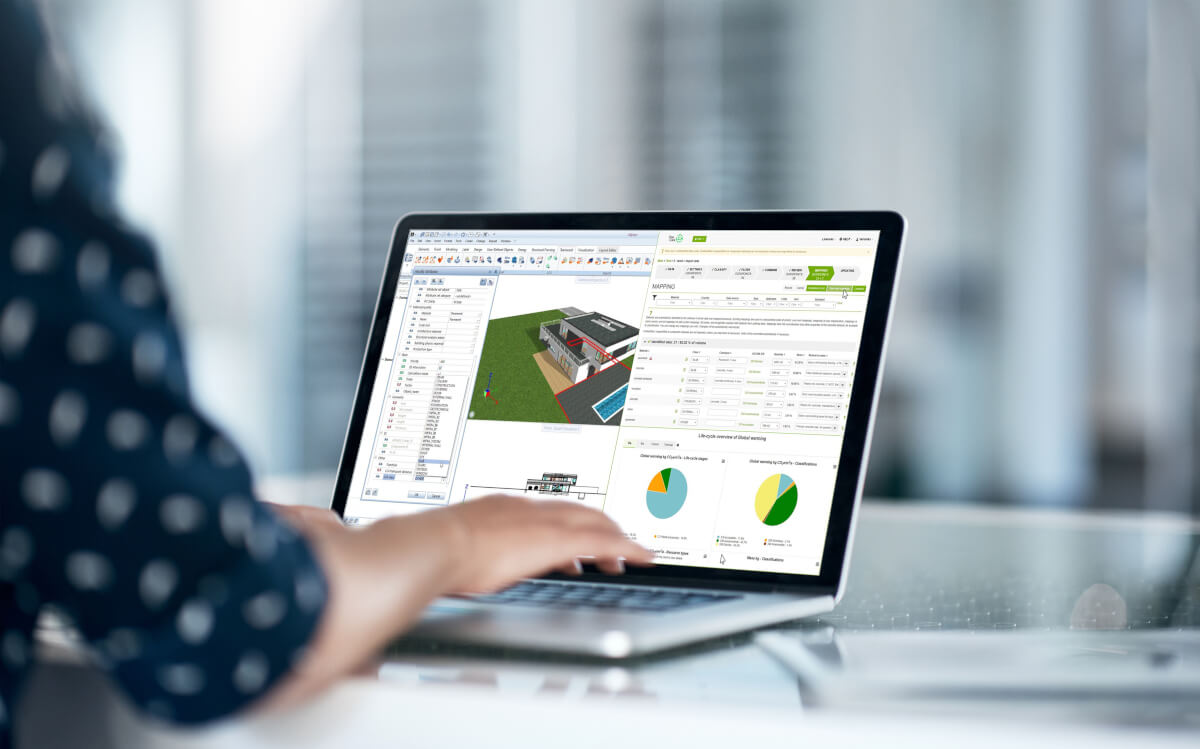According to the Global Alliance for Buildings and Construction (GABC)*, 37 percent of global energy-related carbon emissions in 2020 were caused by buildings. Find out how proven software solutions can be used to quickly and easily analyze the CO2 footprint during the planning phase.
Sustainability is one of the most pressing global concerns, demanding action across all areas of life. This is the only way we can achieve global climate protection, preserve the diversity of the planet, and improve the future prospects of current and future generations. The construction and real estate industry has a central role to play in achieving these goals. No other sector produces higher CO2 emissions than the design, use, and maintenance of our built environment. Around 28 percent of these can be attributed to building operations, while building materials and construction (also known as embedded carbon emissions) are responsible for around 11 percent of carbon emissions. Embedded carbon emissions are largely generated during the building production process, but also during maintenance and refurbishment in the operational phase of the building. One of the key challenges facing architects and engineers is to reduce these as much as possible over the lifetime of the building through sustainable building planning. This is the only way to make a significant contribution to achieving sustainability goals.
For this purpose, it is necessary to analyze all relevant objects of the planned building with regard to their service life, material composition, and mass. The BIM model provides a perfect basis for this calculation. The earlier this life cycle assessment takes place, the more effectively the CO2 footprint of the future building can be reduced.

Powerful tools for analyzing the CO2 footprint
In order to plan and implement more sustainable buildings and thus reduce the negative impact of buildings on global carbon emissions, architects and engineers need software tools that simplify life cycle assessment. This can be achieved with planning solutions that offer an optimized workflow for the creation of BIM models in conjunction with software that simplifies the assignment of building components to life cycle assessment data and manufacturer-specific environmental product declarations.
One Click LCA from the Finnish software provider of the same name is an internationally recognized solution for life cycle assessment. It helps users determine the quantitative and qualitative CO2 footprint of a planned building, showing the effects of different materials and construction methods to optimize the building in terms of sustainability. ONE Click LCA is used by planners, building owners, approval authorities, and investors.
Allplan and ONE Click LCA – the perfect combination for greater sustainability
For this reason, Allplan's latest update offers an interface to One Click LCA and supports users in the planning of sustainable buildings. The BIM model from Allplan, equipped with the corresponding attributes, is automatically transferred to the LCA cloud for analyses and reports via the One Click LCA function. There, the exported data can be processed directly in the project. Calculation standards can then be defined, and the building's life cycle assessment optimized.
The calculation of environmental impact with the help of One Click LCA can be used to ensure that construction projects meet the requirements of BREEAM, LEED, DGNB (German Sustainable Building Council) and more than 50 other certification systems.
*Global Alliance for Buildings and Construction, 2021. 2021 Global Status Report for Buildings and Construction. [online] p.15.





